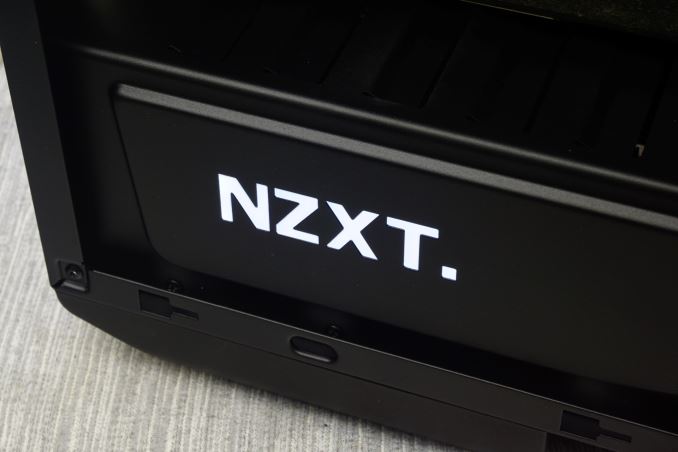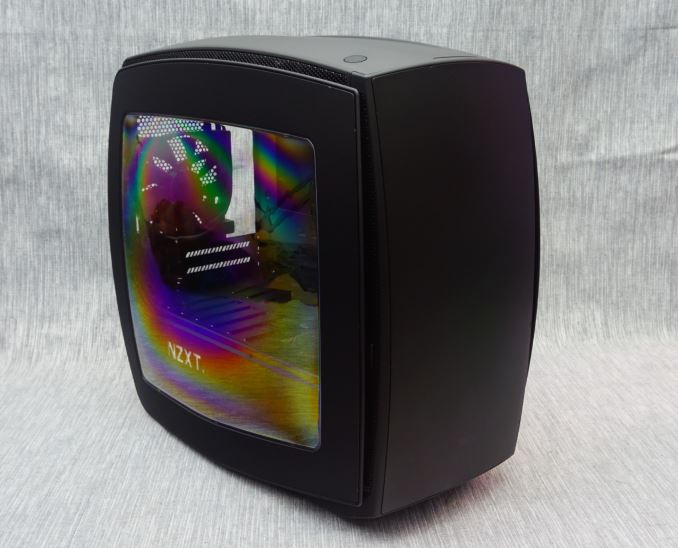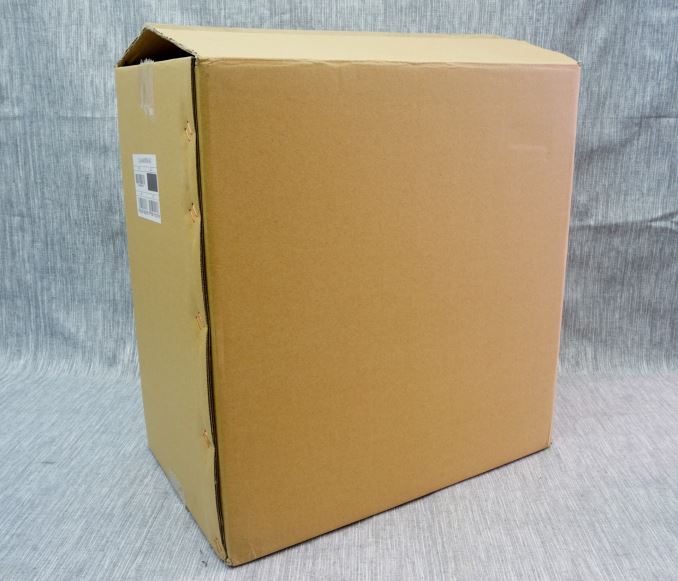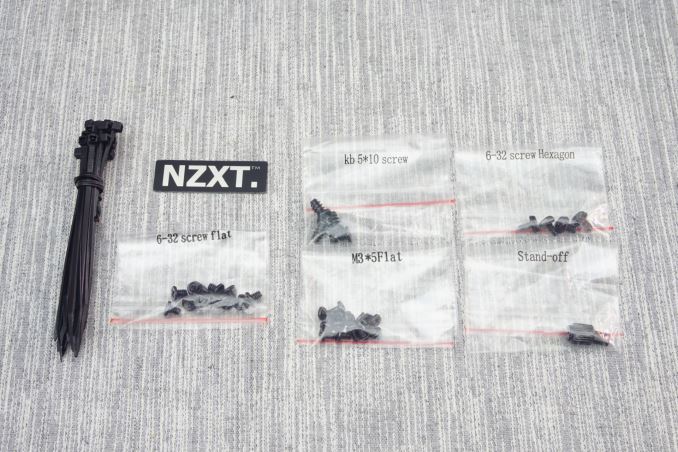The NZXT Manta mITX Case Review
by E. Fylladitakis on June 16, 2016 9:00 AM EST- Posted in
- Cases/Cooling/PSUs
- Mini ITX
- NZXT
- Case

As Mini-ITX systems are moving away from the old slow systems they used to represent and are becoming more powerful with high-end hardware, they become more and more appealing to enthusiasts and gamers. Many companies design cases for Mini-ITX motherboards, with the usual design approach being the minimization of their external dimensions, as designers are striving to fit them into modern living rooms alongside gaming consoles and home cinema equipment.
Introduction
Very small Mini-ITX based cases that can hold powerful gaming systems do exist, but they do have a fair share of limitations - especially when it comes to cooling. Perhaps the most prominent example is the Fractal Design Node 202, a Mini-ITX case that rivals the size of gaming consoles and can hold a rather powerful gaming system, but with very limited cooling and power options.
NZXT is a company that took an entirely different approach with their Mini-ITX design. The company is known among gamers and enthusiasts for providing functional designs with high thermal performance. As such, the company has decided to design the Manta, a tower case reduced to fit Mini-ITX motherboards while still providing enough space for sizable air coolers and liquid cooling radiators.
| NZXT Manta | ||
| Motherboard Size | Mini-ITX | |
| Drive Bays | External | - |
| Internal | 2 × 3.5" 3 × 2.5" |
|
| Cooling | Front | 2 × 120 mm or 2 x 140 mm (2 × 120 mm included) |
| Rear | 1 × 120 mm (included) | |
| Top | 2 × 120 mm or 2 x 140 mm (none included) | |
| HDD | - | |
| Bottom | - | |
| Radiator Support | Front | Up to 240 mm or 280 mm |
| Rear | Up to 120 mm | |
| Top | Up to 240 mm or 280 mm | |
| Side | - | |
| Bottom | - | |
| I/O Port | 2× USB 3.0, 0× USB 2.0, 1× Headphone, 1× Mic | |
| Power Supply Size | ATX | |
| Clearances | HSF | 160 mm |
| PSU | 360 mm | |
| GPU | 360 mm | |
| Dimensions | 426 mm × 245 mm × 450 mm 16.77 in × 9.65 in × 17.72 in |
|
| Prominent Features | · New manufacturing technology offers unparalleled build quality · Elegant, curved steel paneling and window · Double the cable management space · Dual 280mm liquid cooling support · Kraken X61-ready with push/pull capabilities · Integrated PSU shroud for a beautifully clean build · Fully filtered, easy-to-remove intake |
|
| Price | $130 | |
Packaging & Bundle
NZXT is obviously not concerned about the looks of their packaging at all, as they ship the Manta into a plain brown cardboard box. If not for the small sticker on the side, nobody would be able to tell what is inside the packaging. Nevertheless, the box is very sturdy and the case is sandwiched between thick Styrofoam slabs, providing more than enough shipping protection.
The bundle of the Manta is very austere for a case with a $130 price tag, with the company supplying only the necessary mounting screws and hardware, a case sticker and a roll of small cable ties.













48 Comments
View All Comments
Flunk - Thursday, June 16, 2016 - link
I like the look of this, but it's just too big for a mini-ITX case. It's bigger than NZXT's own S340 full ATX case, which is much more practical.freeskier93 - Thursday, June 16, 2016 - link
I'm really baffled by this, I even pulled out the tape measure to measure my s340 and sure enough, basically the same.Lugaidster - Thursday, June 16, 2016 - link
Manufacturers don't get mITX at all. Anandtech doesn't either, apparently. Here's what enthusiasts look for in SFF cases:- Full-length video card compatibility with full wattage support
- Minimal Size
- Enough cooling for 250W GPU
- Decent cooling (though size is more important) for a maximum of 90W TDP in the CPU
- Low noise
And here's why, enthusiast mITX systems are based on Intel systems for the moment, and with the exception of a very specific X99 Asrock motherboard, all systems use 65W-90W Intel CPUs. Overclocking is secondary to noise and size as long as the system is capable of cooling a powerful enough system.
If the system uses full ATX PSUs it's already too big. Those are not needed for a SFF system even if going for an LGA2011 CPU with a Titan GPU, SFX-L serves the purpose just fine, and SFX does even, if you can bear the noise of the PSU when going full tilt.
Please, review cases that are smaller and give ratings accordingly. This particular case is a mess aesthetically and doesn't serve the purpose of a SFF system.
You should take a look at the Ncase m1 (oldie but goodie) or the Dan a4-sfx for inspiration on what enthusiasts look for in a SFF case.
Taverius - Thursday, June 16, 2016 - link
Mmnope. I have an ax760i psu and a k-series in mine. You don't speak for all of us.Lugaidster - Thursday, June 16, 2016 - link
I'm speaking for the frustration I see in communities of SFF systems when designs like this one appears. I won't post links, but hop around SFF forums in HardForum or more dedicated communities and you'll see what I mean. There's a reason the Ncase M1 has such a huge following despite it's price-tag.There's clearly demand for proper SFF systems that try to push the envelope with regards to the amount of horsepower you can put in the smallest possible enclosure, but manufacturers keep pushing fat cases that don't take advantage of the minimal designs mITX allow while maintaining compatibility with high performance parts.
I complain on this review because the case clearly isn't SFF and because the testing done doesn't reflect the type of components you'd want to put in an enthusiast case: 120W GPU with a 150W CPU is not representative, a 100W CPU (and this actually considers moderate overclock, the i7-4790K is 88W) with a 275W GPU is more like it.
JoeyJoJo123 - Thursday, June 16, 2016 - link
I agree with the sentiment of SFF, the I believe the crux here is that this case isn't targeted for small form factor buyers, even though it's restricted to Mini-ITX.Bear with me. Yes it's a Mini-ITX tower, but no it's not small form factor.
This is really intended for people that:
1) Already know they're never going to need anything more than 1 PCI-E slot for anything.
2) (Most important) Want to have a different case shape than a traditional "box".
As others have noted, this is bigger than some midtower ATX cases on the market, and if a user wanted to spend a limited budget more wisely, they'd get a comparable ATX motherboard (which are typically cheaper than Mini-ITX motherboards) and get a smallish ATX midtower (which could fit even more components than a Manta can and is cheaper). So ultimately, they're really only buying the case for the unique shape.
Lugaidster - Thursday, June 16, 2016 - link
Yes, the case is indeed odd, but the review treats it like a SFF case because it tests for components that supposedly would be on a SFF system, like a 120W GPU (I won't repeat myself on why I think the methodology for SFF reviews is flawed).If this case is indeed nothing more than a small tower, like you say, we should see it being compared against other tower systems with thermals according to that type of systems.
JoeyJoJo123 - Thursday, June 16, 2016 - link
I do agree there.The cases really should be compared, not in terms of motherboard size compatibility, but in terms of case volume. I don't think a case of this kind of volume should be compared to a Node 202, for example, even though both are Mini-ITX cases. The inherent difference of volume speaks to different form factor categories, and therefore different customers.
BrokenCrayons - Thursday, June 16, 2016 - link
[H]'s forum is about the last tech forum I'd submit as a place from which to draw a credible sample. The people there are nice and some are pretty informed, but it has its own community-pervasive distortions.TheinsanegamerN - Friday, June 17, 2016 - link
Some of us are still waiting for the A4-SFX to come out. That thing is gonna be sweet when it finally comes out